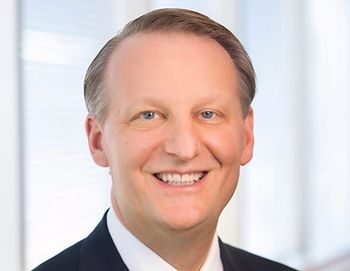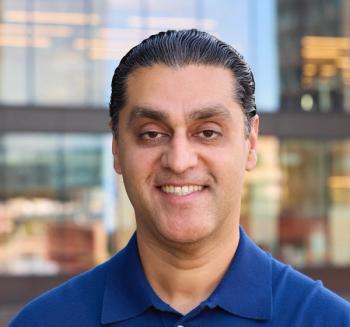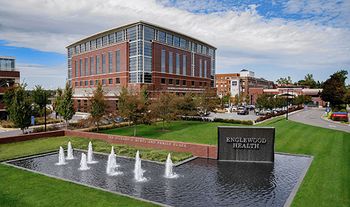
Big Data, Analytics Ready to Meet Health Care Challenges
Learning to handle issues around an aging populace and a reduced health care workforce.
The years following World War II saw a surge in births now commonly referred to as the baby boom. Between 1946-1964, around
The boomers made an indelible mark on the culture. This generation will forever be associated with historical and cultural milestones such as the Vietnam War and the protests against it, the Woodstock music festival, and a major shift in attitudes on subjects from sexuality to drug use.
Now, though, as the oldest of that generation reach retirement age, the boomers are set to make their mark on the nation’s health care system—and the forecast is uncertain.
It’s estimated that 10,000 boomer-age citizens are retiring from the workforce every day. Leaving employment means losing health benefits for many, contributing to what is expected to be a
Many of the retirees themselves will be feeling some financial strain: Fidelity Investments estimated that a 65-year-old couple retiring in 2017 would need
Furthermore, compared to the same age group measured in 1999, the segment of the population between the ages of 50-64 in 2014 had a 55% higher prevalence of diabetes, 25% higher prevalence of obesity, and a 9% lower prevalence of a health status of very good to excellent, according to a study by the
Technology and the Health Care Talent Shortage
It's an unfortunate coincidence, then, that as this group begins to impact the health care system, the system is experiencing personnel shortages. The Association of American Medical Colleges predicts the U.S. will face a shortage of 120,000 physicians by 2030.
The situation has the makings of a perfect storm, reflected in the “silver tsunami” nickname given to the flood of boomers reaching retirement age.
A major change in how health care is consumed and dispensed already is occurring, and the increase in older patients and reduction of medical personnel will ensure those changes continue, according to Dr. Carla Vandeweerd, Director of Research for a large health care practice offering health services to more than 40,000 older adults and an Associate Professor at the University of South Florida. She and her colleague Dr. Ali Yalcin, Associate Professor in the College of Engineering, co-founded CREATE Health — a research collaborative focused on the intersection of technology, aging and health.
“Technology is a big part of the fundamental paradigm shift we see in the practice of medicine,” said Vandeweerd. Technological advances, she explained, allow physicians and health care organizations to identify high-risk patients at an earlier stage, identify population trends, and also to “streamline processes in hospitals and identify waste so that ultimately we can improve patient health outcomes, reduce costs and have a fundamentally better health care delivery system”.
“We’re certainly going to need that moving forward, having 10,000 older adults retiring every day. Thirty years from now, there will be 90 million adults over the age of 65,” Vandeweerd noted.
Big data analytics is helping to meet these challenges, as well as the discovery of new and unexpected correlations along the way, according to Dr. Ali Yalcin.
“As we start collecting and storing more and more data, and analysis of large data sets becomes more viable, different approaches come around,” Yalcin said. “You let data mining algorithms start sifting through the data and discovering relations and patterns that you never even thought of before.”
Known as data mining, it’s a process “that falls under the umbrella of data analytics,” Yalcin said. “Data mining is interesting because it allows us to find information that we didn’t even really know existed.
“I think that’s really interesting from a health perspective,” Yalcin said, “because we can find interesting correlations, for example, between people’s behavior and health outcomes. These are excellent data mining challenges where there are not necessarily clear understandings of the relationships between input and target variables. Data mining techniques can tell us more about these hidden associations.”
Of course, data analytics can also pinpoint specific things researchers may be seeking in terms of cost reduction and patient outcomes.
“If, for example, a hospital is looking at readmissions,” Vandeweerd said, “you can set up data tracking tools that will compile information about rates of readmission by presenting problem such as post-surgical infection, and we can look at that information according to: Who was the physician who did their procedure? Who are the nurses who followed up? What room did the patient stay in? What resources were utilized?”
“We can identify places where there may be gaps in service that are helping to contribute to these outcomes,” Vandeweerd said. “And we can take measures to close those gaps. From that perspective, both hospitals and patients benefit because there’s less use of resources while, at the same time, there’s also better care and better quality of life. That’s a win-win across the board.”
Vandeweerd believes the combination of data analytics and technology can help overcome a shortage of physicians, and even the less tangible loss of in-person patient-doctor encounters.
“Having good, targeted information about their patient populations much more effectively arms physicians with tools they need to make sure the time they are spending with patients is the most effective,” Vandeweerd said.
“I think that understanding good evidence-based tools such as risk profiles help them specifically target and identify patients that might benefit from enhanced case management. It helps them identify patients that need to be in health education programs. It helps them learn how to navigate what struggles patients might be experiencing and how to use their time as a physician in the practice much more actively,” Vandeweerd said.
Vandeweerd also advocates telemedicine, which allows doctors to see patients via the internet.
Telemedicine, Vandeweerd said, “can help a physician target their time with patients who are most in need of service and can allow physicians located in one area to treat patients across a much wider geographic region.” Telehealth also is ideal for patients with disabilities that make travel difficult, Vandeweerd said.
How Analytics Control Cost
Data stands to help the insurance companies as well, Vandeweerd said.
“It’s to the insurance company’s benefit to be armed with good predictive models,” Vandeweerd said. “As a health insurance provider, I want to make sure that my patient population is as healthy as possible, because that keeps my costs low.
“I want to be sure I identify the patients who will benefit the most from programs like health education to improve quality of life for patients with diabetes or to reduce risk for stoke,” Vandeweerd said. “As an insurance company, I want to make sure I know if these programs work and who they work for, so when I’m paying for them I’m getting some bang for my buck.”
That need for efficiency is one area where Yalcin sees overlap between his field, industrial and management systems engineering, and one of his areas of research interest, health care analytics.
Health care is “an industry that can use a critical eye toward efficiency and cost reduction, which is what industrial engineers usually do,” Yalcin said. He created a course, Health care Data Mining and Predictive Analytics, that’s required for students pursuing a Master of Science in Health Informatics with a concentration in
Health care will be facing many challenges in coming years, but Vandeweerd believes that a system armed with the right data will be able to meet them.
“We’re coming to a place where we can understand a lot more data points about people than we ever have before,” Vandeweerd said. “Our growth, in terms of health care understanding in the last five years alone, is exponential.
“I think as we continue to educate the next generation of the health care workforce, as we continue to teach young minds about all the potential data points that might be out there, we’re going to find ourselves in a position where we can connect the system better,” Vandeweerd said. “I think that’s the direction we’re headed in long-term as an industry.”






























































































